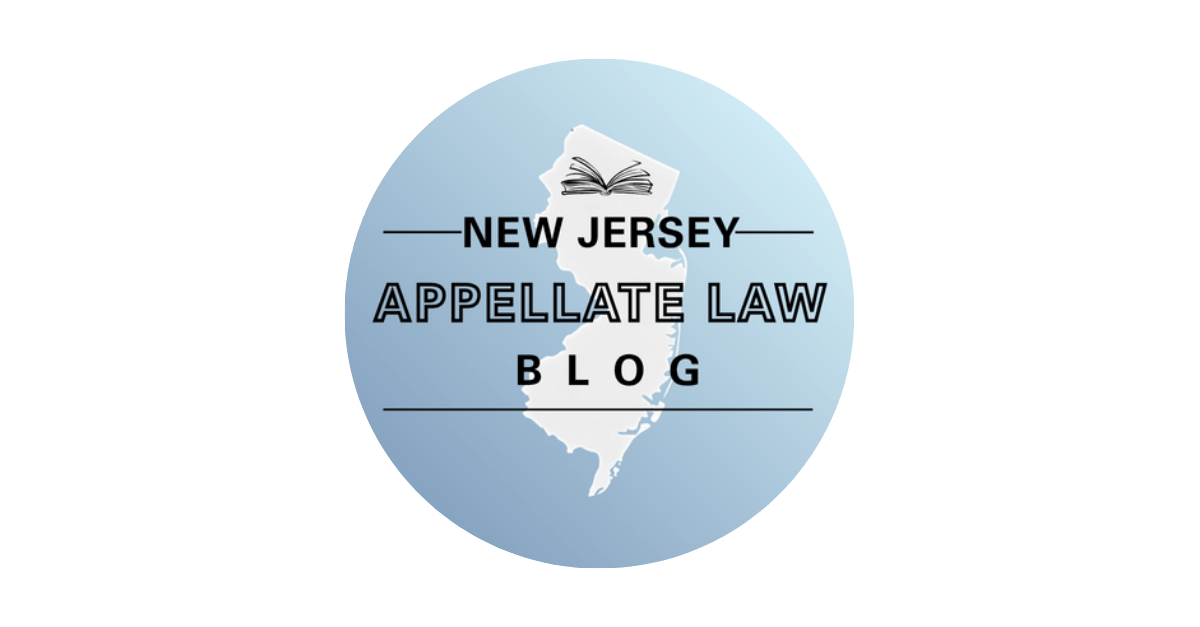Mauer v. State of New Jersey, ___ N.J. Super. ___ (App. Div. 2025). Plaintiff, a State of New Jersey employee, filed lawsuits against the State, several State agencies, and certain employees of those agencies under the Conscientious Employee Protection Act, N.J.S.A. 34:19-1 et seq. The two cases were consolidated. The law firm of Brown & Connery (“B&C”) appeared for defendants.
In March 2022, William Tambussi, a B&C partner, and another attorney at the firm were designated as defendants’ trial counsel. Thereafter, as Judge Marczyk recited in his opinion for the Appellate Division in this case today, “[i]n June 2024, the State indicted Tambussi, alleging that he participated with George Norcross in crimes related to the development of the Camden waterfront.” The indictment alleged that Tambussi was a B&C partner and ‘the long-time personal attorney to’ Norcross, and that Tambussi ‘was an active participant’ a Norcross plot ‘to use . . . Camden’s government to bring a condemnation action’ against a developer as part of an extortion.
After the indictment, Tambussi withdrew his appearance in the present case. Another B&C attorney certified that Tambussi’s ‘involvement in this matter was limited strictly to the filing of the designated trial counsel notice.’ That attorney also stated that Tambussi had ‘performed no substantive work in the defense of” either of plaintiff’s cases.
Plaintiff moved to disqualify B&C. “Specifically, she contended B&C had an unwaivable conflict of interest due to the Attorney General’s indictment of Tambussi.” She relied on Rule of Professional Conduct 1.7 in arguing that “Tambussi’s indictment created a ‘significant risk that the representation of one or more clients will be materially limited by the lawyer’s responsibilities to another client, a former client, or a third person, or by a personal interest of the lawyer” and that that conflict was imputed to others at B&C under Rule of Professional Conduct 1.10. She also cited the Attorney General’s Office’s Outside Counsel Guidelines and asserted that “under RPC 1.9 and Dewey v. R.J. Reynolds Tobacco Co., 109 N.J. 201 (1988), Tambussi’s disqualification resulted in the disqualification of B&C because it is a partnership.”
The Law Division denied disqualification. As Judge Marczyk stated, that court found it “’[f]actually . . . important to note that [B&C] is not adverse to the State or to the Attorney General.’ Notably, the court indicated defendants are neither part of the OAG [Office of the Attorney General] nor factually connected to the indictment. It further held RPC 1.7 was not implicated because B&C and defense counsel do not have any adverse interest to defendants. Additionally, it noted Tambussi was indicted in his personal capacity and was not involved in the litigation of this matter.” Moreover, “the court concluded the imputation of conflicts under RPC 1.10 was inapplicable because no concurrent conflict of interest exists under RPC 1.7, given that defendants are not part of the OAG.” Finally, “the court held RPC 1.9 was not implicated because the Dewey case, upon which plaintiff relied, involved different facts and applied an outdated version of the Rule.”
The Appellate Division granted plaintiff leave to appeal and affirmed the ruling of the Law Division, applying de novo review. Judge Marczyk observed that “[d]isqualification of counsel is a harsh discretionary remedy which must be used sparingly” and that disqualification motions are to be viewed “skeptically in light of their potential abuse to secure tactical advantage.” Thus, “[t]he party seeking the disqualification bears the burden of persuasion.”
Judge Marczyk proceeded to painstakingly analyze each of plaintiff’s arguments, concluding that none had merit. His opinion is one that all attorneys, and many others, should read in full, involving as it does critical issues of professional ethics.
In brief summary, the panel held that the Outside Counsel Guidelines did not create a conflict “because nothing in the indictment or this civil action would cause B&C to advocate a position that would conflict with or be adverse to the interests of the State or defendants.” Besides, plaintiff “provide[d] no support for her contention that the indictment’s references to B&C does not safeguard[] the public’s confidence or protect the public interest.”
“The trial court correctly determined ‘there is no basis to support plaintiff's position that RPC 1.9 is implicated,’” Judge Marczyk said. Defendants were not former clients of B&C, and “there is no evidence that B&C’s representation of any former clients creates a conflict of interest in their representation of defendants. Accordingly, because no conflict exists under RPC 1.9, there is no imputed conflict to B&C pursuant to RPC 1.10.”
Judge Marczyk agreed with the Law Division that Dewey did not aid plaintiff. That case involved an attorney who had worked for years on the other side of the same matter. Neither Tambussi nor anyone else at B&C had switched sides. And Dewey relied on an “appearance of impropriety” standard that was later removed from the RPC 1.9.
A footnote to all this: Tambussi and the other indicted defendants recently won dismissal of the indictment. Defendants argued that the dismissal mooted this appeal. The panel disagreed, as the State had announced its intention to appeal the dismissal. Thus, the panel chose to release this opinion today.

